Grid computing is the use of widely distributed computer resources to reach a common goal. A computing grid can be thought of as a distributed system with non-interactive workloads that involve many files. Grid computing is distinguished from conventional high-performance computing systems such as cluster computing in that grid computers have each node set to perform a different task/application. Grid computers also tend to be more heterogeneous and geographically dispersed than cluster computers. Although a single grid can be dedicated to a particular application, commonly a grid is used for a variety of purposes. Grids are often constructed with general-purpose grid middleware software libraries. Grid sizes can be quite large.
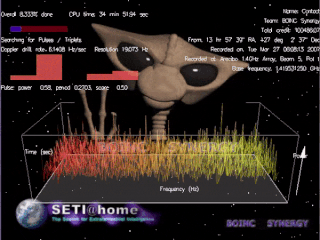
SETI@home is a project of the Berkeley SETI Research Center to analyze radio signals with the aim of searching for signs of extraterrestrial intelligence. Until March 2020, it was run as an Internet-based public volunteer computing project that employed the BOINC software platform. It is hosted by the Space Sciences Laboratory at the University of California, Berkeley, and is one of many activities undertaken as part of the worldwide SETI effort.

The Berkeley Open Infrastructure for Network Computing is an open-source middleware system for volunteer computing. Developed originally to support SETI@home, it became the platform for many other applications in areas as diverse as medicine, molecular biology, mathematics, linguistics, climatology, environmental science, and astrophysics, among others. The purpose of BOINC is to enable researchers to utilize processing resources of personal computers and other devices around the world.

Predictor@home was a volunteer computing project that used BOINC software to predict protein structure from protein sequence in the context of the 6th biannual CASP, or Critical Assessment of Techniques for Protein Structure Prediction. A major goal of the project was the testing and evaluating of new algorithms to predict both known and unknown protein structures.

climateprediction.net (CPDN) is a volunteer computing project to investigate and reduce uncertainties in climate modelling. It aims to do this by running hundreds of thousands of different models using the donated idle time of ordinary personal computers, thereby leading to a better understanding of how models are affected by small changes in the many parameters known to influence the global climate.

World Community Grid (WCG) is an effort to create the world's largest volunteer computing platform to tackle scientific research that benefits humanity. Launched on November 16, 2004, with proprietary Grid MP client from United Devices and adding support for Berkeley Open Infrastructure for Network Computing (BOINC) in 2005, World Community Grid eventually discontinued the Grid MP client and consolidated on the BOINC platform in 2008. In September 2021, it was announced that IBM transferred ownership to the Krembil Research Institute of University Health Network in Toronto, Ontario.

Within the BOINC platform for volunteer computing, the BOINC Credit System helps volunteers keep track of how much CPU time they have donated to various projects. This ensures users are returning accurate results for both scientific and statistical reasons.

David Pope Anderson is an American research scientist at the Space Sciences Laboratory, at the University of California, Berkeley, and an adjunct professor of computer science at the University of Houston. Anderson leads the SETI@home, BOINC, Bossa, and Bolt software projects.

μFluids@Home is a computer simulation of two-phase flow behavior in microgravity and microfluidics problems at Purdue University, using the Surface Evolver program.

PrimeGrid is a volunteer computing project that searches for very large prime numbers whilst also aiming to solve long-standing mathematical conjectures. It uses the Berkeley Open Infrastructure for Network Computing (BOINC) platform. PrimeGrid offers a number of subprojects for prime-number sieving and discovery. Some of these are available through the BOINC client, others through the PRPNet client. Some of the work is manual, i.e. it requires manually starting work units and uploading results. Different subprojects may run on different operating systems, and may have executables for CPUs, GPUs, or both; while running the Lucas–Lehmer–Riesel test, CPUs with Advanced Vector Extensions and Fused Multiply-Add instruction sets will yield the fastest results for non-GPU accelerated workloads.

SETI@home beta, is a hibernating volunteer computing project using the Berkeley Open Infrastructure for Network Computing (BOINC) platform, as a test environment for future SETI@home projects:

Volunteer computing is a type of distributed computing in which people donate their computers' unused resources to a research-oriented project, and sometimes in exchange for credit points. The fundamental idea behind it is that a modern desktop computer is sufficiently powerful to perform billions of operations a second, but for most users only between 10–15% of its capacity is used. Common tasks such as word processing or web browsing leave the computer mostly idle.

Cosmology@Home is a volunteer computing project that uses the BOINC platform and was once run at the Departments of Astronomy and Physics at the University of Illinois at Urbana-Champaign. The project has moved to the Institut Lagrange de Paris and the Institut d'Astrophysique de Paris, both of which are located in the Pierre and Marie Curie University.
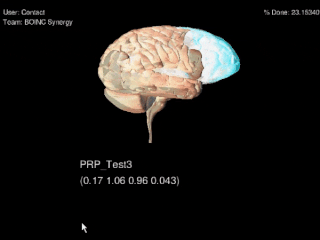
MindModeling@Home is an inactive non-profit, volunteer computing research project for the advancement of cognitive science. MindModeling@Home is hosted by Wright State University and the University of Dayton in Dayton, Ohio.
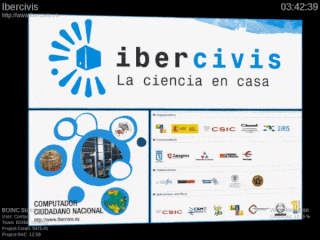
Ibercivis was a volunteer computing platform which allows internet users to participate in scientific research by donating unused computer cycles to run scientific simulations and other tasks. The original project, which became operational in 2008, was a scientific collaboration between the Portuguese and Spanish governments, but it is open to the general public and scientific community, both within and beyond the Iberian Peninsula. The project's name is a portmanteau of Iberia and the Latin word civis, meaning 'citizen'.
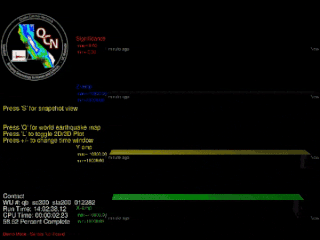
The Quake-Catcher Network was an initiative run by the University of Southern California that aimed to use computer-based accelerometers to detect earthquakes. It used the BOINC volunteer computing platform.
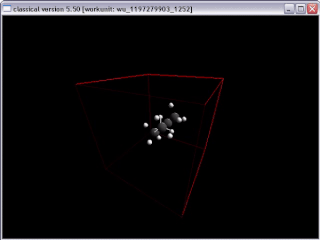
Leiden Classical was a volunteer computing project run by the Theoretical Chemistry Department of the Leiden Institute of Chemistry at Leiden University. Leiden Classical used the BOINC system, and enabled scientists or science students to submit their own test simulations of various molecules and atoms in a classical mechanics environment. ClassicalDynamics is a program completely written in C++. The library is covered by the LGPL license and the main program is covered by the GPL. The project shut down on June 5, 2018.

Docking@Home was a volunteer computing project hosted by the University of Delaware and running on the Berkeley Open Infrastructure for Network Computing (BOINC) software platform. It models protein-ligand docking using the CHARMM program. Volunteer computing allows an extensive search of protein-ligand docking conformations and selection of near-native ligand conformations are achieved by using ligand based hierarchical clustering. The ultimate aim was the development of new pharmaceutical drugs.

theSkyNet was a research project that used volunteer Internet-connected computers to carry out research in astronomy. It was an initiative of the International Centre for Radio Astronomy Research (ICRAR), a joint venture of Curtin University and the University of Western Australia. theSkyNet had two projects, Sourcefinder and POGS. Both projects have been completed. theSkyNet Sourcefinder aimed to test and refine automatic radio sourcefinding algorithms in preparation for radio galaxy surveys using the Australian Square Kilometre Array Pathfinder and the Square Kilometre Array. theSkyNet POGS used Spectral Energy Distribution fitting to calculate characteristics of many galaxies using images taken by the Pan-STARRS PS1 optical telescope in Hawaii.


















